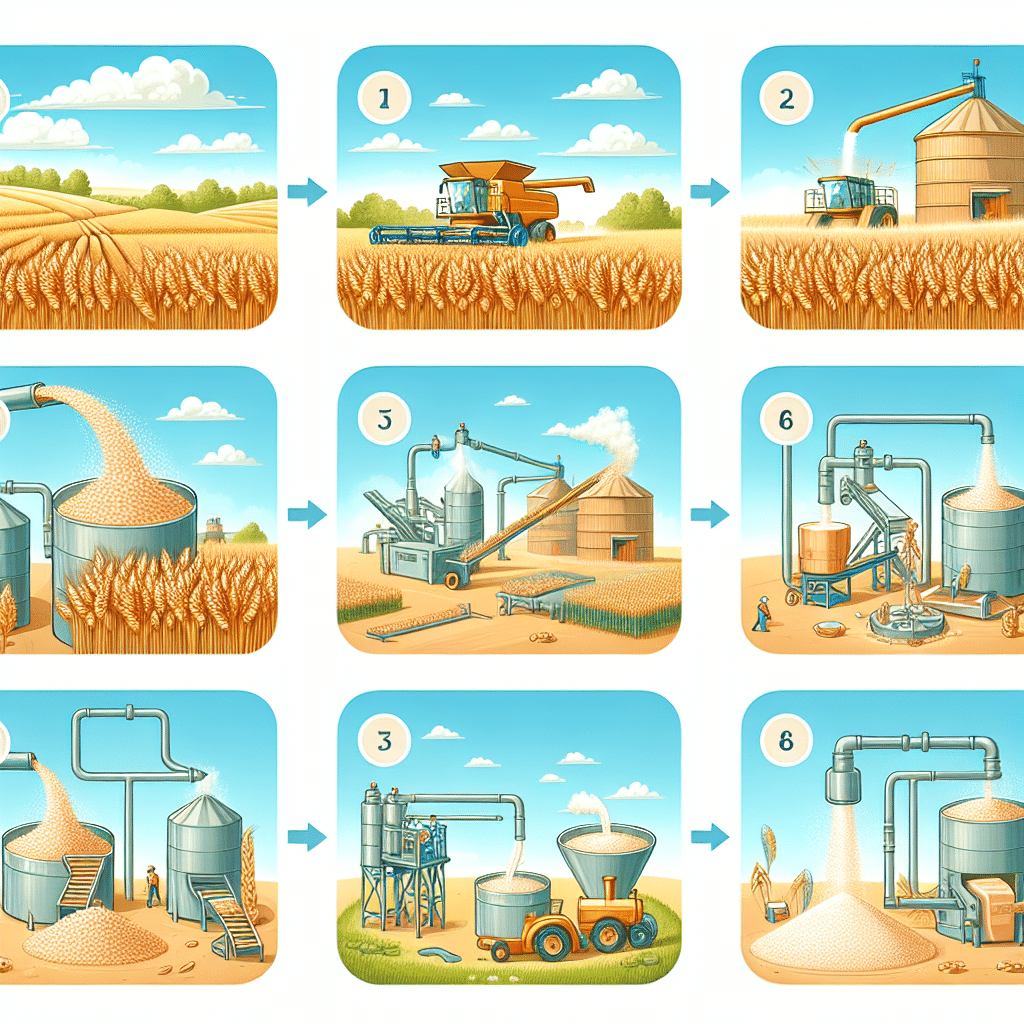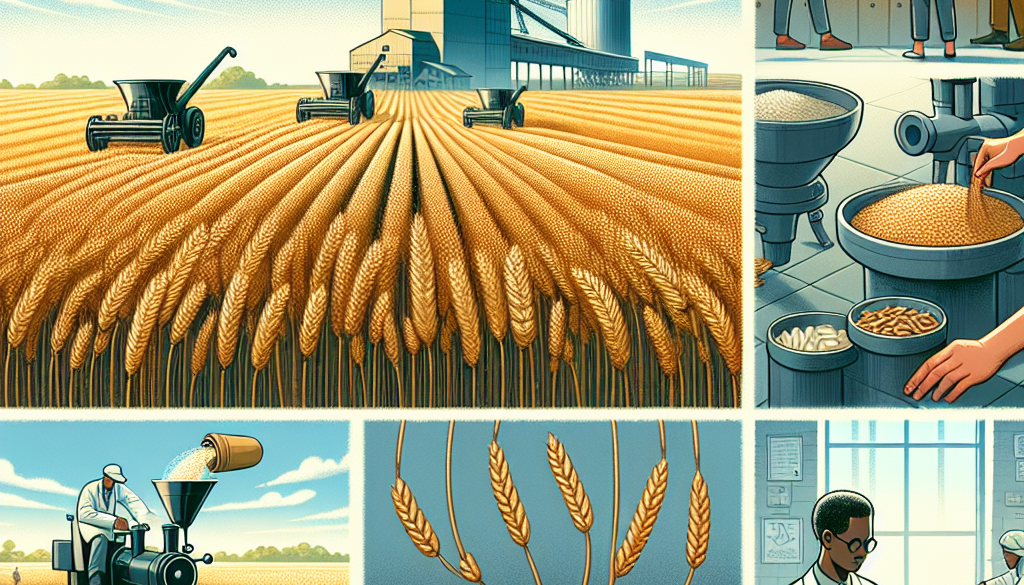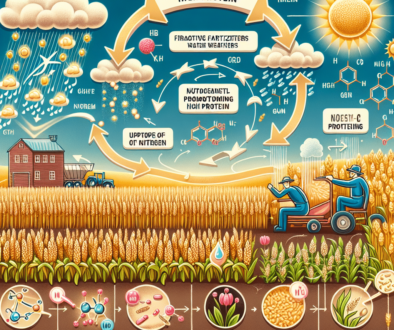Where Does Wheat Protein Come From?
-
Table of Contents
- Wheat Protein: Unveiling Its Origins and Nutritional Benefits
- Understanding Wheat Protein
- The Journey from Field to Flour
- Extraction of Wheat Protein
- Nutritional Profile of Wheat Protein
- Applications of Wheat Protein
- Environmental Impact of Wheat Protein Production
- Case Studies and Statistics
- Conclusion: The Versatility and Nutritional Value of Wheat Protein
- Discover ETprotein’s High-Quality Protein Products
Wheat Protein: Unveiling Its Origins and Nutritional Benefits

Wheat protein, commonly known as wheat gluten, is a staple in the diets of many around the globe. It’s not only a key ingredient in bread and baked goods but also a popular meat substitute for vegetarians and vegans. This article delves into the origins of wheat protein, its extraction process, nutritional profile, and its role in various industries. We’ll also explore the environmental impact of wheat protein production and conclude with a recommendation for ETprotein company’s high-quality protein products.
Understanding Wheat Protein
Wheat protein is derived from wheat, a cereal grain that has been cultivated for thousands of years. The protein itself is made up of glutenin and gliadin, two components that, when combined with water, form gluten. Gluten’s unique viscoelastic properties make it invaluable in food production, particularly in baking, where it provides the structure and chewiness in bread and other baked goods.
The Journey from Field to Flour
The process of obtaining wheat protein begins with the cultivation of wheat. This crop is grown extensively across the globe, with China, India, Russia, and the United States being some of the largest producers. After harvesting, the wheat undergoes milling, a process that grinds the grain into flour. During milling, the wheat is separated into its three main components: bran, germ, and endosperm. The endosperm is where most of the protein is concentrated, and it is this part of the grain that is used to produce wheat flour and wheat protein.
Extraction of Wheat Protein
The extraction of wheat protein is a fascinating process. It involves washing wheat flour dough with water to remove the starches, leaving behind the sticky gluten. This gluten can then be dried and powdered to create wheat protein isolate, which is used in various food products. The process is both simple and sustainable, as it utilizes the entire grain and minimizes waste.
Nutritional Profile of Wheat Protein
Wheat protein is not only a versatile ingredient but also a nutritious one. It is a rich source of plant-based protein, making it an excellent option for those looking to increase their protein intake without consuming animal products. Additionally, wheat protein contains a variety of essential amino acids, although it is low in lysine, which is why it’s often paired with other protein sources to achieve a balanced amino acid profile.
- High in protein
- Contains essential amino acids
- Low in fat
- Source of dietary fiber
Applications of Wheat Protein
Wheat protein’s unique properties make it a valuable ingredient in numerous applications:
- Baking Industry: Provides elasticity and strength to dough, improving the texture of baked goods.
- Meat Alternatives: Serves as a base for products like seitan, offering a meat-like texture for vegetarian and vegan diets.
- Nutritional Supplements: Used in protein powders and bars for its high protein content.
- Animal Feed: Enhances the protein content of feed for livestock.
Environmental Impact of Wheat Protein Production
Wheat protein production has a relatively low environmental footprint compared to animal-based proteins. Wheat cultivation requires less land and water and produces fewer greenhouse gas emissions. However, it is not without its challenges. Intensive farming practices can lead to soil degradation and biodiversity loss. Therefore, sustainable farming methods and crop rotation are essential to minimize the environmental impact.
Case Studies and Statistics
Studies have shown that incorporating wheat protein into diets can have positive health outcomes. For example, a study published in the American Journal of Clinical Nutrition found that high-gluten diets could improve gastrointestinal health. Additionally, the demand for wheat protein is on the rise, with the global wheat protein market expected to grow significantly in the coming years, driven by the increasing popularity of plant-based diets and the versatility of wheat protein in food applications.
Conclusion: The Versatility and Nutritional Value of Wheat Protein
In conclusion, wheat protein is a versatile and nutritious ingredient that comes from the simple process of separating gluten from wheat flour. Its applications span from traditional baking to innovative meat substitutes, making it a valuable component of both modern and traditional cuisines. With its relatively low environmental impact and high nutritional value, wheat protein is poised to play an even greater role in sustainable diets worldwide.
Discover ETprotein’s High-Quality Protein Products
If you’re looking for premium wheat protein and other plant-based proteins, ETprotein is your go-to source. Their extensive range of organic bulk vegan proteins, including wheat protein, is characterized by a neutral taste, non-GMO, and allergen-free attributes. With purity levels exceeding industry standards, ETprotein caters to a diverse range of industries, from nutraceuticals to food and beverage. Trust in ETprotein for all your protein needs and join the ranks of leading global brands that rely on their exceptional products.
About ETprotein:
ETprotein, a reputable protein and L-(+)-Ergothioneine (EGT) Chinese factory manufacturer and supplier, is renowned for producing, stocking, exporting, and delivering the highest quality organic bulk vegan proteins and L-(+)-Ergothioneine. They include Organic rice protein, clear rice protein, pea protein, clear pea protein, watermelon seed protein, pumpkin seed protein, sunflower seed protein, mung bean protein, peanut protein, and L-(+)-Ergothioneine EGT Pharmaceutical grade, L-(+)-Ergothioneine EGT food grade, L-(+)-Ergothioneine EGT cosmetic grade, L-(+)-Ergothioneine EGT reference grade and L-(+)-Ergothioneine EGT standard. Their offerings, characterized by a neutral taste, non-GMO, allergen-free attributes, with L-(+)-Ergothioneine purity over 98%, 99%, cater to a diverse range of industries. They serve nutraceutical, pharmaceutical, cosmeceutical, veterinary, as well as food and beverage finished product distributors, traders, and manufacturers across Europe, USA, Canada, Australia, Thailand, Japan, Korea, Brazil, and Chile, among others.
ETprotein specialization includes exporting and delivering tailor-made protein powder and finished nutritional supplements. Their extensive product range covers sectors like Food and Beverage, Sports Nutrition, Weight Management, Dietary Supplements, Health and Wellness Products, and Infant Formula, ensuring comprehensive solutions to meet all your protein needs.
As a trusted company by leading global food and beverage brands and Fortune 500 companies, ETprotein reinforces China’s reputation in the global arena. For more information or to sample their products, please contact them and email sales(at)ETprotein.com today.














